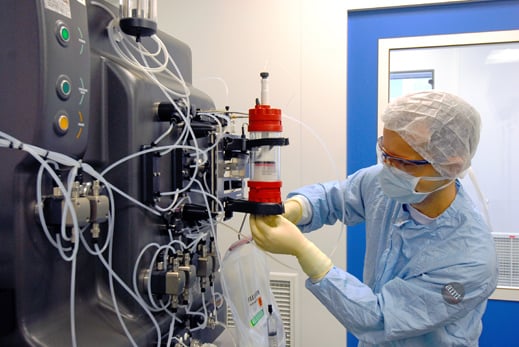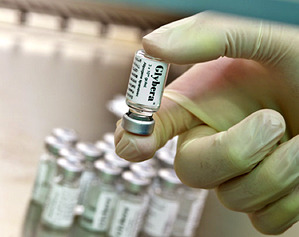Gene Therapy on the Mend as Treatment Gets Western Approval
Last month, Europe’s Committee for Medicinal Products for Human Use approved a gene therapy for a rare genetic disease, the first time a Western regulatory agency has okayed such a treatment, though gene therapies have been approved in China.

The virus-mediated treatment, called Glybera, which is being developed by Amsterdam-based UniQure, introduces a normal version of a gene needed to properly break down fats in the blood. Though the condition is rare, patients with dysfunctional copies of this gene have dramatically increased levels of fat in their blood, which can lead to fatal inflammation of the pancreas. The genetic repair lowers blood fat concentration and reduces the frequency of pancreatitis, according to clinical trial data.
The approval is just another sign that the field of gene therapy is quietly enjoying a resurgence after disastrous results in the late 1990s derailed testing of the technology. A number of companies are now testing various gene therapy products. For example, in 2010, Cambridge, Massachusetts-based Bluebird Bio reported it had successfully treated an 18-year-old patient for a rare blood disease (see “Gene Therapy Combats Hereditary Blood Disease”). Hemophilia, immune deficiencies, and blindness have all been treated with at least some benefit to the patients willing to try the experimental therapy. And large pharmaceutical companies such as Novartis, GlaxoSmithKline, and Baxter have taken on gene therapy projects in recent years.

“The fact that there were no approved gene therapy drugs up until recently probably made a subliminal impression on people that it wasn’t ready for prime time,” says Jean Bennett, a physician-scientist at the University and Pennsylvania and Perelman School of Medicine in Philadelphia. Bennett is involved in a clinical trial of gene therapy for an inherited form of blindness. “Now that there is one approved gene therapy product in the Western world, there is hope that there will be many others.”
Indeed, recent positive results have helped push the field beyond its early setbacks, perhaps the most public of which was the death of 18-year-old Jesse Gelsinger, who died in 1999 after receiving an experimental gene therapy for a genetic condition (see “A Death in Philadelphia”). Other early gene therapy patients had severe or even deadly immune reactions. Some patients who received gene therapy injections got cancer as a result of the treatment (see “The Glimmering Promise of Gene Therapy”). These setbacks raised the question of whether the treatment could be done safely.
The basic concept of gene therapy—replacing a defective gene or adding in a functional copy— is straightforward, but the trick is in the delivery. Gene therapies are often carried into a patient’s cells by viruses. Some of the early problems with the therapies were due to strong immune reaction to the transport viruses or cancer sparked by genomic changes induced by the viruses. But in recent years, researchers have found safer viruses and techniques for getting the replacement genes into a patient’s body.
“The promise of gene therapy is phenomenal—a one-time treatment that will restore the natural function of the body,” says Jörn Aldag, CEO of UniQure. “Many people have pushed back and said it would never be approved, but now we are over the hump,” says Aldag.
UniQure has already built a manufacturing facility capable of commercial-scale production. Aldag expects Glybera to go on sale in the third quarter of 2013. In the meantime, the company must figure out what to charge for the treatment. The company is mulling the fact that treatments for other metabolic diseases can cost $200,000 per year or more, and that Glybera may be needed only once in a patient’s lifetime, says Aldag. “How do you price a one-off treatment?”
Keep Reading
Most Popular
Large language models can do jaw-dropping things. But nobody knows exactly why.
And that's a problem. Figuring it out is one of the biggest scientific puzzles of our time and a crucial step towards controlling more powerful future models.
The problem with plug-in hybrids? Their drivers.
Plug-in hybrids are often sold as a transition to EVs, but new data from Europe shows we’re still underestimating the emissions they produce.
Google DeepMind’s new generative model makes Super Mario–like games from scratch
Genie learns how to control games by watching hours and hours of video. It could help train next-gen robots too.
How scientists traced a mysterious covid case back to six toilets
When wastewater surveillance turns into a hunt for a single infected individual, the ethics get tricky.
Stay connected
Get the latest updates from
MIT Technology Review
Discover special offers, top stories, upcoming events, and more.